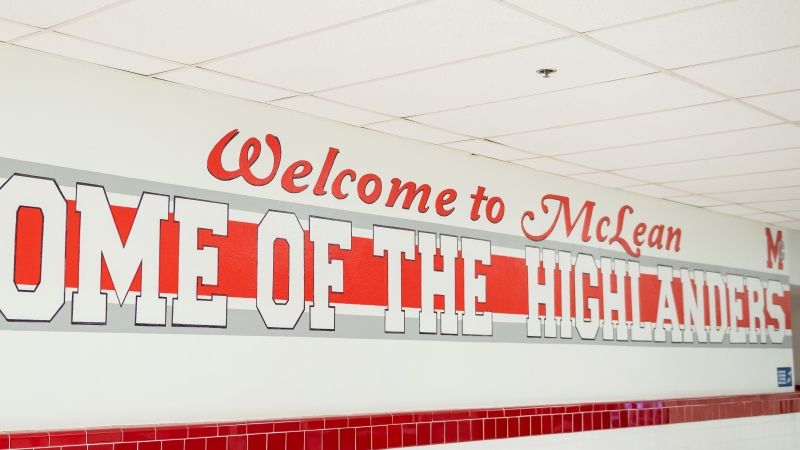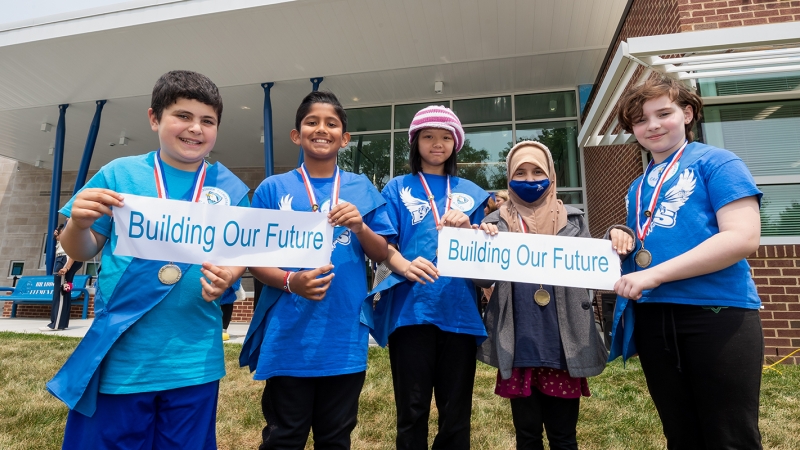
Boundary Policy Review - Spring 2024
The Fairfax County School Board is updating the Boundary Policy to provide a clear roadmap for any potential future boundary changes
For the first time in decades, the Fairfax County School Board is conducting a comprehensive review of the Fairfax County Public Schools Boundary Policy (Policy 8130) to consider possible updates that will provide a clear roadmap for any potential future boundary changes to provide students the most effective and safest instructional experiences. There are no specific boundary changes under consideration as part of this policy work.
This holistic policy review is designed to address the community's concerns about a host of issues, including temporary classrooms (trailers), instructional program locations, overcrowding, facility renovation timelines, and transportation. Comprehensive community engagement will take place before any potential future boundary changes are considered.
Benefits of Policy Updates
According to educational research reviewed by the FCPS Office of Research and Strategic Improvement (ORSI), sound boundary adjustment decisions may be linked to better student achievement through instructional quality, budget optimization, and enhanced student well-being.
Instructional Quality
A comprehensive review of boundaries can help provide every student with exceptional educational experiences. A clear roadmap for potential adjustments can:
- Provide ideal class sizes and teacher-to-student ratios, as over and under-enrollment in schools is better managed.
- Expand access to opportunities, facilities, and learning equipment and materials in a school that is not overcrowded.
- Decrease overcrowding and allow for a more balanced enrollment-to-space ratio, which can enable new and expanded program placement that is dependent on need instead of available space.
- Allow for reduced busing, commute time, and transportation costs.
Budget Optimization
A thoughtful review of boundaries can positively impact our school division's financial sustainability. A clear roadmap for potential adjustments can:
- Provide more timely and cost-effective results. While adding capacity to or renovating existing buildings is an attractive option for some, it is cost-prohibitive and time-consuming.
- Prioritize available funding for maintenance work, safety and security needs, and the most needed school renovations. It could also reduce the time schools wait between major renovation projects (currently more than 40 years).
- Maximize transportation routes, which can also reduce equipment costs and help alleviate driver shortages.
Student Well-Being
This work can support students’ physical and mental well-being, which is important to their educational experience.
Shorter Commutes and Positive Sleep Impact
- The updated policy could result in shorter bus/car commute times (a top priority in the 2021 parent/guardian survey). This could also reduce earlier mornings and later evenings for some students.
- If slight boundary adjustments are made on an established, consistent basis, larger and more disruptive adjustments can be avoided.
- Students could have the ability to stay in neighborhood schools AND receive their desired programs. This could also result in fewer students transferring and parents/caregivers having to provide transportation.
- Ultimately, this can positively affect the amount of sleep students get:
- According to the National Sleep Foundation (2019), children ages 6 to 13 need between 9 and 11 hours of sleep, and teenagers need between 8 and 10 hours of sleep every night.
- Children who get insufficient sleep show reductions in motivation, engagement, concentration, and problem-solving skills, all of which influence student achievement and behavior in school.
Stronger Social Connections
- This work can reduce “split feeders” that divert students from remaining with a cohort of peers as they move on to high school.
- Split feeders are not uncommon in FCPS due to legacy boundaries, which result from development, new schools, and previous boundary changes.
- In the 2021 survey, parents/caregivers prioritized the ability of students to stay with friends or in their community.
- Living close to a neighborhood school allows for stronger bonds between families and their school community.
- With a shorter commute, families find it easier to engage with the school, participate in school activities, attend conferences, and take part in volunteer opportunities.
- Families and schools can build stronger relationships and networks within the community to enhance the student educational experience.
Policy Consideration Process
- February-June 2024: The School Board’s Governance Committee studied and considered potential updates to the Boundary Policy at several public meetings.
- June 25, 2024: The School Board held a public work session to consider and discuss the Governance Committee’s draft Boundary Policy updates.
- June 27 and July 11, 2024: Draft boundary policy updates were twice posted as new business for an upcoming School Board vote at its July 18, 2024 regular meeting.
- July 18, 2024: The School Board approved updates to the Boundary Policy (Policy 8130) at its July 18 Regular Public Meeting, completing a years-long comprehensive review of the policy for the first time in nearly four decades. Read the news release.





